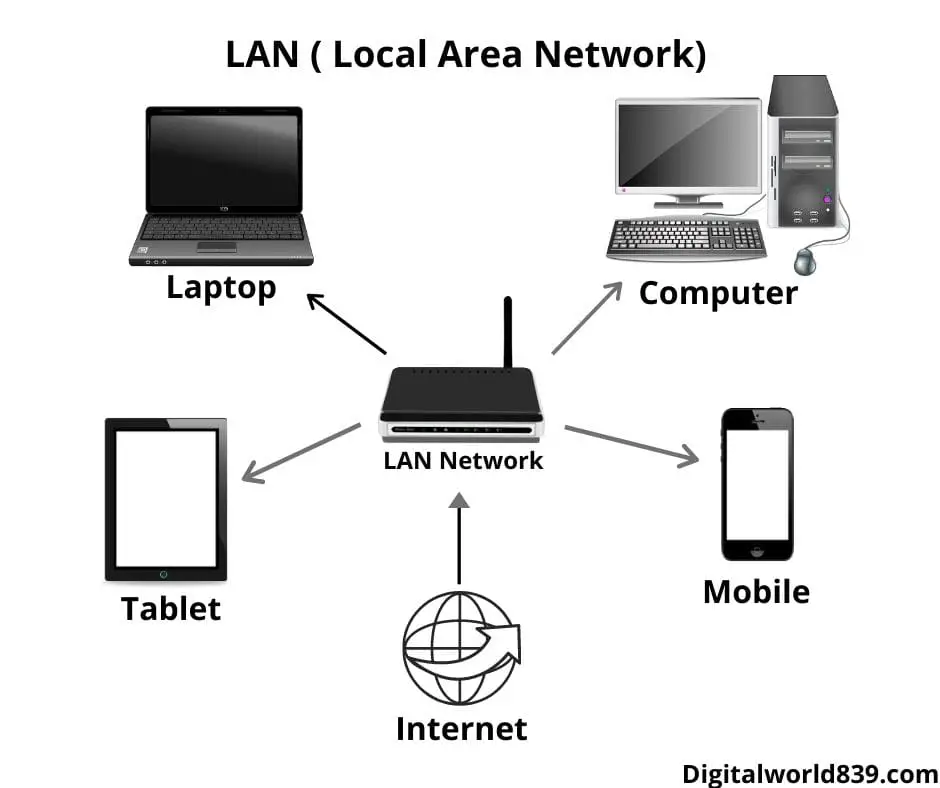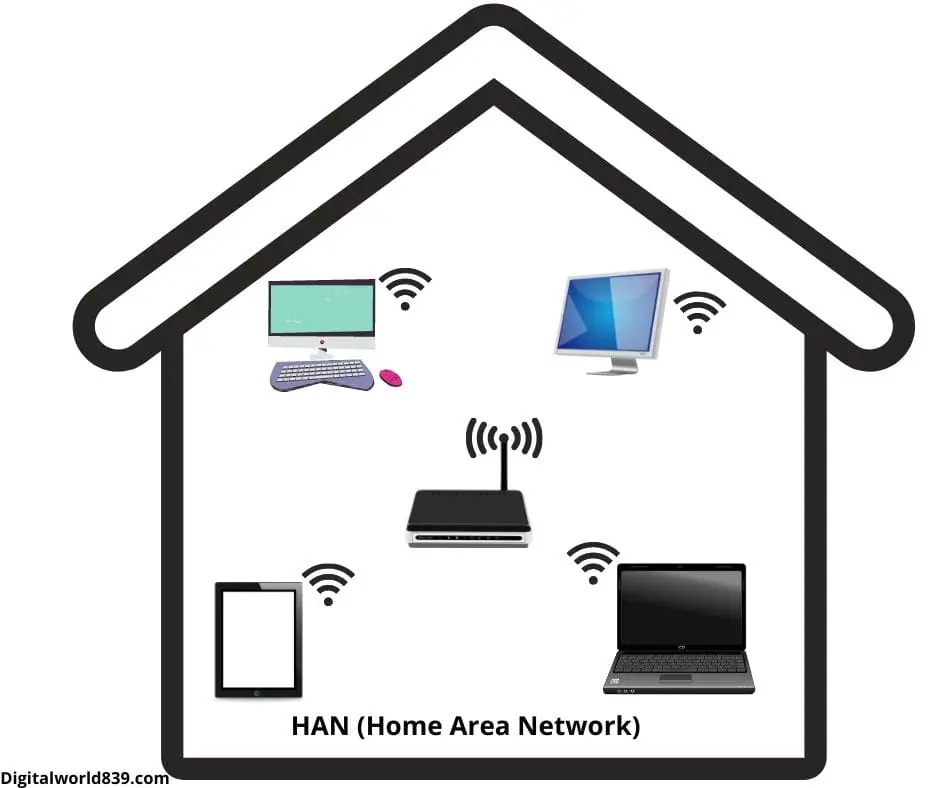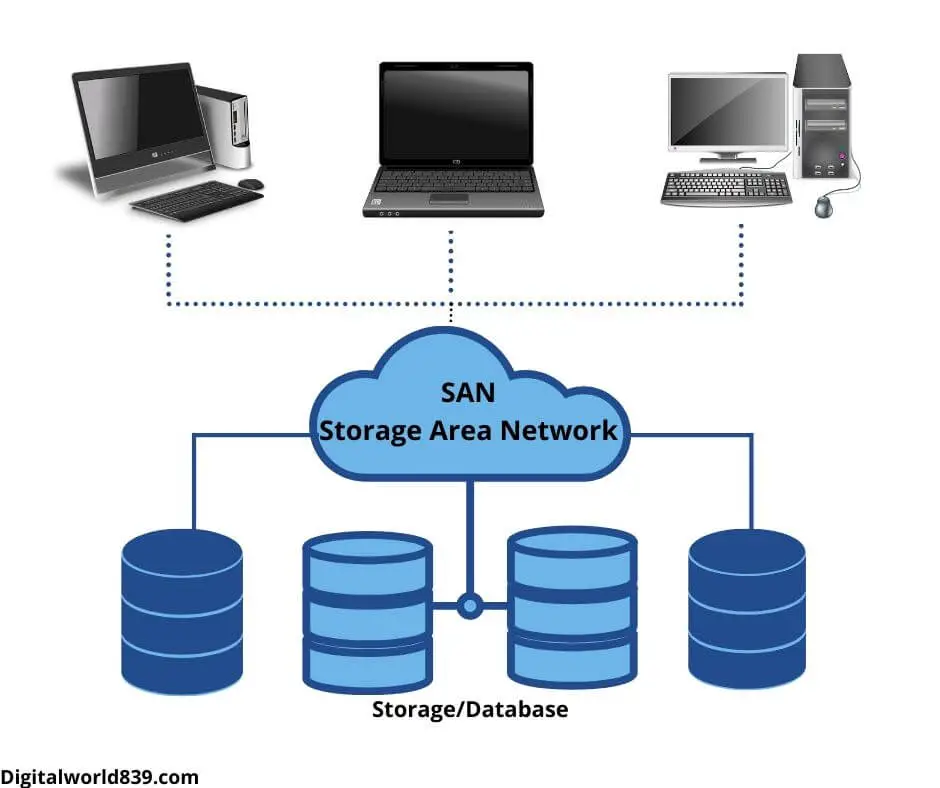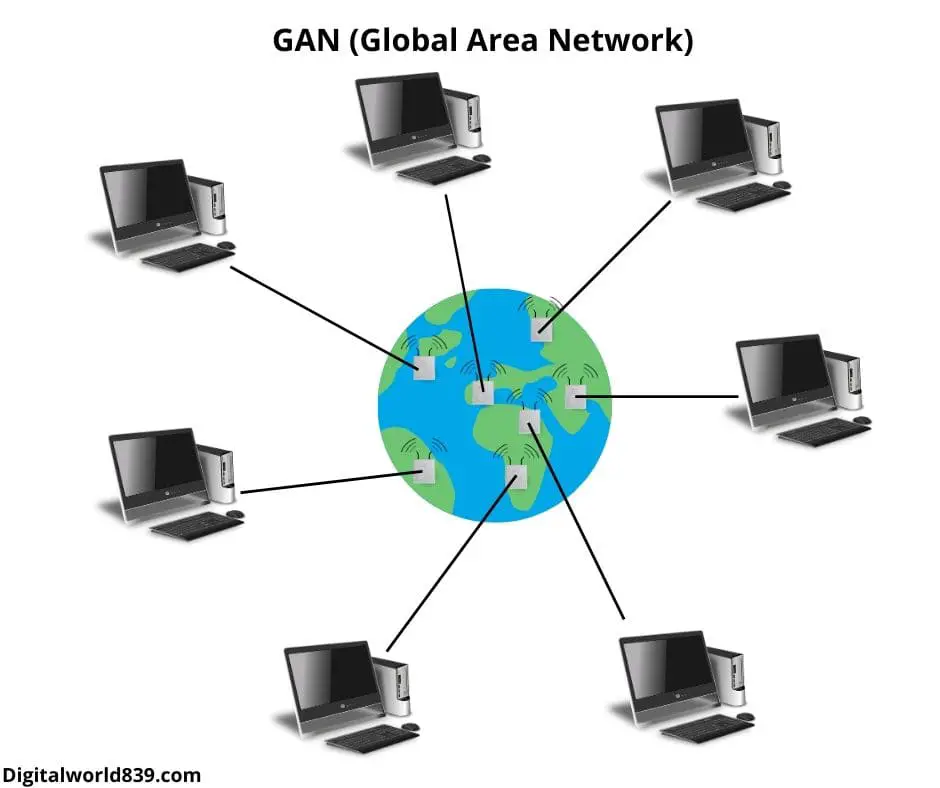In today’s digital world, we are connected with many types of networks of computers. Various computer networks help us to share and access essential data and information.
Let’s know the main types of networks with diagrams that play an essential role in commercial and daily life. Before understanding the network types first let’s see what is a network? and computer network?
What is a Network?
A network is a collection of computers, servers, mainframes, network devices, or other interconnected devices that allow sharing data among themselves. One of the best examples of a network is the internet, which connects millions of people worldwide.
What is a Computer Network?
Computer Network is also known as Data Network. It is a group of many computer devices and other computing hardware devices that are linked to each other through any communication channel (e.g., Wired: Fiber optic cable, Wireless: WiFi) or connected through communication or resource sharing (e.g., Hard disk sharing, CPU sharing) work, it is called Computer Network or Data Network.
In other words, when two or more computing devices connect for data sharing or resource sharing, it is called Computer Network. Computer Network is made from the combination of Hardware and Software.
When two devices are connected, and one machine can share data, then at that time, we can call that device also a networked device.
For example, when you connect mobile to another mobile via Bluetooth, one can share data between the two, then that mobile is called a networked device.
Types of Networks
1. LAN (Local Area Network)

The full form of LAN is the ‘Local Area Network.’ As the name suggests, it works to connect local computers.
You will find this network everywhere, like office, college, school, business organization. This network is used for resource sharing, data storage, document printing.
This network is managed or used by one person or one organization. The LAN can be enabled via WiFi or Ethernet. When you share your internet connection with someone else, such sharing is also an example of LAN. The smallest LAN can be made up of only two computers.
In a LAN, we can connect up to 1000 computers. Most LANs are used in wire connections. But nowadays, it is also being used without wire, i.e., in wireless connections.
The bonus point of this network is its speed, low expenses, and security. This the first types of networks, and the second one is:
2. WAN (Wide Area Network)

A WAN full-form is ‘Wide Area Network.’ It is the types of computer network with many LANs that have a much broader range than LAN and MAN.
This network’s geographical periphery is more extensive, such as a network of systems spread across the entire city, country, or continent. It is the largest network that connects the whole globe’s computers.
This network connects many similar structures, such as many LANs and MANs.
The best example of WAN is the Internet. Through the Internet, people can connect from one place or other computers or users anywhere in the world. It is implemented by a public broadcasting system or private network. The ATM facility of banks is also an example of the Wide Area Network.
3. MAN (Metropolitan Area Network)

The Full form of MAN is the ‘Metropolitan Area Network.’ These types of networks are used to transfer data at high speed within a city. It is used to create an extensive network by connecting all the LANs in the city. Under this, two or more local area networks are connected.
This network connects all the prominent colleges, schools, and government offices in the city. Thus, we can say that a MAN network is made up of multiple LANs.
The best example of a MAN is Cable TV. The cable TV is situated in the middle of a city, and from there, its cable spreads throughout the city, and the user uses the service through the cable network.
A big business organization has its own MAN. Through which it connects to a different branch. If such networks start being used on a college campus, they call it a campus area network.
4. WLAN (Wireless Local Area Network)

The full form of WLAN is ‘Wireless Local Area Network.’ Wireless means connection without physical wire.
The WLAN connects the relationship between two short-range devices by wireless classification method and provides a link to access the Internet, using the Speed Spectrum or OFDM technology. Even if the user is connected while moving in a fixed spatial area, it keeps connected.
Wireless LAN allows the facility to connect to network devices in a small area such as home and offices. Like if we combine our Networking devices like mobile and computers to any WiFi, then it becomes a wireless LAN (WLAN). WLAN is also known as LAWN (Local Area Wireless Network).
These networks work similarly like LAN, but it does not have any wire, i.e., wireless. It works on the base of the Radio waves.
5. PAN (Personal Area Network)

PAN’s full form is ‘Personal Area Network.’ It is a computer network that uses to connect the individual’s workspace.
PAN works to transmit data between many networking devices such as computers, tablets, smartphones, smartwatches, etc.
A PAN itself includes a lot of different connections, including Ethernet Port, WiFi, and Bluetooth. For example, a desktop computer might connect with a personal router via Ethernet, and a tablet might connect via WiFi or Bluetooth. A smartphone can communicate with a computer via WiFi and a smartwatch via Bluetooth.
“Smartphone tethering” is a common type of PAN in which a laptop or any other device is connected via the Internet with a cellular data connection to a smartphone.
If your mobile allows it, you can set up your smartphone using a “mobile hotspot” or “personal hotspot“ that makes it work as a wireless router.
6. HAN (Home Area Network)

Other types of computer networks are HAN, i.e., ‘Home Area Network.’ If some people in the same residence are using the same system, we can call such networking a home area network.
It has an internet connection that is associated with a modem. The modems can provide both wired and wireless connections.
WIFI is also a kind of home area network. One can print out the document or upload, and download photos, and online streaming can also be done with HAN. There are not many differences between HAN and PAN types of networks.
7. SAN (Storage Area Network)

The full form of SAN is the ‘Storage Area Network.’ SAN storage has a high-performance and high-speed network that connects storage devices to the server. The SAN is a pool of storage devices that are interconnected and share the storage with connected servers.
SAN Storage Resources deals as an independent high-speed resource in the shared user network, especially the high speed which make sense for uploading purposes.
All the servers connected to the network access the storage pool as directly related to the server. However, a single server can quickly provide a shared hard drive to multiple machines. Also, large networks require more storage than a single server.
Large companies use these types of networks. For example, a large business has several terabytes, which has needed to be accessible by multiple machines. In such a situation, a SAN can be set up instead of adding additional servers.
Since only hard drives have to be added in place of entire computer systems, SANs provide an efficient way to increase network storage.
8. CAN (Campus Area Network)

The full form of CAN is ‘Campus Area Network‘ or ‘Controller Area Network,’ but sometimes it is also known for ‘Cluster Area Network’ and ‘Corporate Area Network.’
Multiple Local Area Network connects campus Area Network in a limited area such as offices, schools, universities, business sectors (Intranet), etc.
A campus area network is more extensive than a local area network (LAN) because it covers multiple buildings under a specific area.
Most of the LANs lies under many CANs connected via switches and routers, which interconnect to form a single network. Similarly, like LANs, they can be accessed by wired or wireless connections.
Such a network is accessed by campus residents only, such as students and faculty.
9. VPN (Virtual Private Network)

The full form of VPN is ‘Virtual Private Network,’ a network technology that makes the internet or wifi connection secure while accessing any website. VPN is a perfect way to keep your network safe and to protect your data from hackers.
VPN service is mostly used by online working merchants, organizations, government agencies, educational institutions, and corporations to protect their critical data and privacy from unauthorized users and hackers.
VPN keeps the network secure, whether it is more important or less important. Ordinary people can also use such network (VPN) services on a computer or mobile phone with applications while browsing to protect viruses from anonymous websites.
By using VPN, Data can be secured on both computers and mobile, e.g., one can transfer data anywhere without being hacked, as well as access any blocked websites. Thus, these types of computer networks are mostly used for security purposes.
10. GAN (Global Area Network)

And the last type of network is GAN’s full form is ‘Global Area Network.’ A GAN is a network composed of different interconnected wireless networks that cover a large geographical area. It consists of a vast area network and many other networks. It is used over the communications of large areas. And it does not connect directly to any network.
The broadband GAN is an international satellite Internet network that uses portable terminals for telephony.
History of Networks
We have seen the above types of networks, but the beginning of the network is many years ago, from 1960 to 1970. The name of the network is ARPANET (Advanced Research Project Agency Network). The network’s objective was to connect terminals and remote job entry stations with the mainframe.
But at the time, ARPANET had a fundamental element of putting the concept sharing of resource sharing.
The ARPANET was quite reliable. It used PACKET switching technology instead of Circuit Switching. The ARPANET was also used in the US Department of Defense to be sent to the Guinea threat. They were connecting it to different universities in the US. Industrialists also started to use it.
Gradually, the company continued to do more development. Today it has become the largest network in the world, which we call the Internet. It also leads to the development of different types of computer networks in today’s date.
The above were the main types of networks used by computers. Share also with your friends to make them know the types of networks as well.




